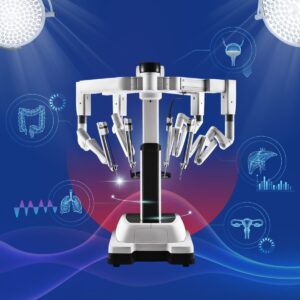Breast milk provides the ideal nutrition for infants. Breastfeeding offers tremendous health benefits to the babies since breast milk is primarily composed of high amount of proteins, fats, vitamins and minerals which are essentially required for growth and development. In addition, breast milk also contains antioxidants and immunity-boosting antibodies that help the baby to fight off infections caused by various pathogens, such as viruses and bacteria. Moreover, breast milk can promote sensory and cognitive development as well as protect the infants against chronic diseases. Nevertheless, breastfeeding can challenge both mothers and babies. To achieve successful breastfeeding, the understanding of breastfeeding and appropriate techniques are crucial.
Breast milk composition
Breast milk comprises of a number of nutrients and bioactive factors that benefit baby’s immune system and development. These include:
Proteins:
- The protein content in breast milk is optimal, resulting in a complete digestion and preserved kidney function.
- Protein in breast milk can help to prevent infections while improving cognitive and sensory developments
- Breast milk does not contain beta-lactoglobulin (beta-lg) which is a major allergen that causes milk allergy in the babies.
Fats:
- Breast milk contains high amount of omega-3 and omega-6 fatty acids (DHA and AA) which are essential for brain development.
- Fat content consists of cholesterol, the long-chain fatty acid that plays a pivotal part in building baby’s nervous system and aiding development of a healthy brain.
- Lipase enzyme found in breast milk helps the babies to digest and regulate the uptake of lipids.
Carbohydrates:
- Lactose is the predominant sugar found in breast milk. It helps to promote a healthy digestive system and enhance brain development.
- Oligosaccharides found in breast milk can improve digestive functions by promoting healthy microflora in the intestine, strengthening the gut barrier function and blocking pathogens.
Vitamins and trace minerals:
- Breast milk is full of essential vitamins and minerals, e.g. iron, zinc and calcium. High bioavailability of iron in breast milk allows for high absorption rates, ranging from 50-75%.
- Selenium found in breast milk is considered a powerful antioxidant. It is essential for optimal antioxidant protection, which protects every cell and promotes a healthy immune function.
Immune cells and antibodies
- Immune protective components in breast milk include immune-boosting white blood cells and antibodies that principally defend against infections and illnesses.
Growth and development substances
- A number of substances in breast milk play a vital role in promoting optimal growth and brain development of the infant.
- Breast milk contains enzymes that actively take part in the digestion. These enzymes are required for lipid and carbohydrate digestion, enabling the infant to consume adequate energy.
- Several hormones found in breast milk regulate infant’s body functions and development.
Benefits of breast milk
Breast milk is considered ideal nutrition since it poses tremendous benefits for both babies and mothers. Breast milk is rich in:
- Fats, proteins and carbohydrates that provide sufficient energy for growth and development.
- Enzymes that exhibit antimicrobial and immunomodulatory that protect the infant from infections and illnesses.
- Substances that minimize allergic reactions caused by proteins in cow milk.
- Bioactive nutrients required for brain and nervous system development.
Apart from the lifelong benefits of breastfeeding for the baby, breastfeeding helps mothers to reduce post-delivery blood loss (postpartum bleeding), decrease the chance of developing breast and ovarian cancers while strengthening bonding between mother and newborn.
Tips to improve the chance of successful breastfeeding
A comprehensive breastfeeding care enhances an appropriate and successful lactation, acting as a key to promote baby’s growth and development. During breastfeeding, it is highly recommended to:
- Clean the nipples and surrounding areas before and after breastfeeding every time. Nipple cleansing can be done by using clean water or normal saline. The composite of positioning attachment and suckling should be properly arranged. At the beginning, it is advised to alternate breasts multiple times during a feeding. After the baby breastfeeds for 15-20 minutes on one breast, switches over to the other breast for another 15-20 minutes, then switches back to the first breast again and so on (if breast milk is sufficiently produced, it is possible to make a full, healthy supply of breast milk with only one breast).
- Make sure that the baby’s head is positioned at the breast, higher than the body at the correct angle, so the nipple is aimed at the roof of the baby’s mouth and lightly touch the baby’s lip with the nipple.
- Regularly observe the position of the breast. Avoid leaning the breast forward into the baby’s mouth, as this can lead to poor attachment.
- Burp a baby after each breastfeeding by holding the baby upright, in a vertical position with the baby’s head over your shoulder. Burping helps to get rid of some of the air from the stomach that babies tend to swallow during feeding. After burping, baby carrying positions can be altered.
- Avoid bottle feeding at the beginning as it increases the chance of refusing breastfeeding.
- Pump and store breast milk appropriately. Mothers can start their breast milk pumping using milk pumping equipment. The freshly expressed breast milk should be kept in the refrigerator, up to 12 hours. After bottle feeding, the remaining amount of expressed breast milk in the bottle should be disposed of since it can become spoiled.
Breast care during breastfeeding
- Wear a supportive bra. Make sure it fits well and is not too tight.
- Regularly clean the nipples using water or normal saline.
- To avoid dry and chapped skin of nipples, soap can be used occasionally.
Energy consumption during breastfeeding
Energy up to 85 calories is usually required to produce 100 ml. of breast milk. During the first 6 months, breastfeeding women are assumed to produce approximately 700 – 850 ml. of breast milk per day. The amount of milk breast substantially reduces to 600 ml. per day and 550 ml. per day during 6-12 months and 12-24 months, respectively. Thus, breastfeeding women require more energy, up to 500 calories per day to maintain an abundant milk supply. Protein is crucial for the production of breast milk. More importantly, protein passes from the mother to the baby to nourish and support growth and development. For this reason, breastfeeding women require an additional 25 grams of protein per day. To ensure an adequate supply of breast milk, it is essential to consume plenty of protein-rich foods every day.
Breastfeeding diets
To increase breast milk supply, breastfeeding mothers often receive a variety of well-intentioned advices about what to eat during this period. Diets that substantially promote breast milk production include:
- Banana blossom: Banana blossom or banana flower are rich in iron which assists in red blood cell production and increases lactation.
- Basil leaves: Basil leaves contain high amount of beta-carotene, helping in promoting milk production with anti-flatulence or gas-relieving property for relieve symptoms of indigestion.
- Chives: Chives contain iron, phosphorus and calcium which promote milk production and reduce inflammation while regulating optimal temperature for the body.
- Ginger: Ginger is commonly known to stimulate milk supply, reduce nausea and vomiting as well as promote food and fat digestions.
- Jackfruit seed: Jackfruit seed is rich in beta-carotene that enhances milk production.
There is an abundance of medical studies suggesting the benefits of breastfeeding in infancy that carry over in later life. Besides nutritious advantages of breastfeeding, skin-to-skin contact and suckling play a vital role in activating sensory interaction, resulting in constant processing and transmitting neural signals to the brain. Breastfeeding, thus, can improve cognitive development and emotional interactions between the mother and infant.













